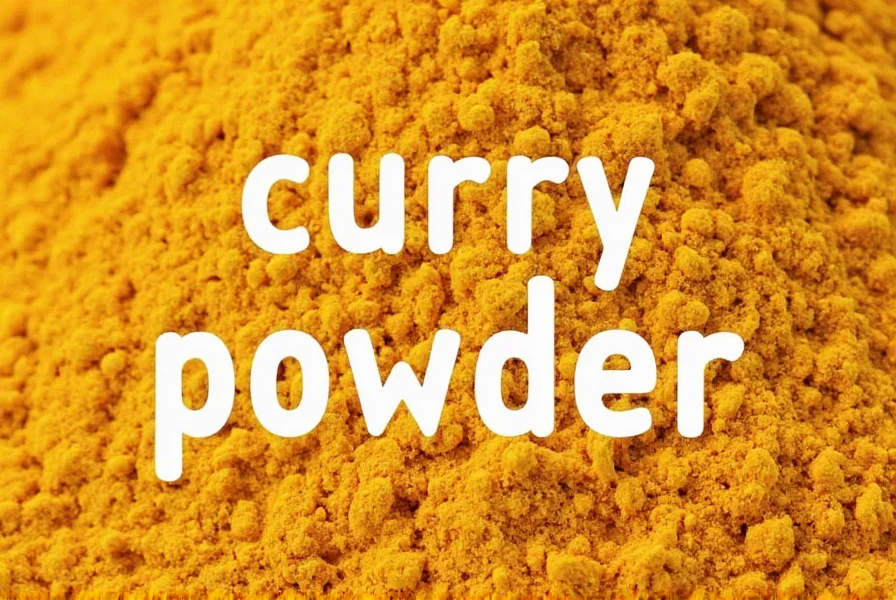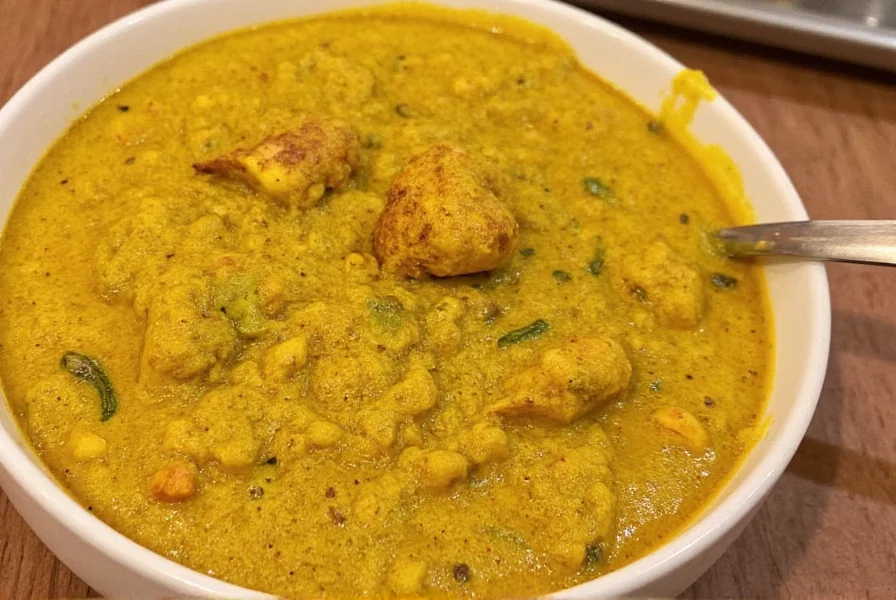Curry Powder En Español: A Spicy Journey Through Flavor, Culture & Kitchen Magic
Table of Contents
- Introduction
- What is Curry Powder?
- A Brief History: From India to Latin America
- Types of Curry Powder Around the World (and en Español)
- Comparison Table: Regional Curry Powders
- How to Use Curry Powder in Spanish-speaking Kitchens
- Buying Guide: Choosing the Best Curry Powder
- Pro Cooking Tips: Mastering Curry Powder in Everyday Dishes
- Storing Your Spice Like a Pro
- Frequently Asked Questions
- Conclusion
Introduction
If you’ve ever wandered through a mercado or tienda de especias, you might have stumbled across a jar labeled "curry" – and wondered, "¿Qué es esto?" Well, amigos, that’s curry powder, and it’s more than just a colorful powder on a shelf. It’s a flavor bomb, a culinary passport, and yes, even a little bit of magic.
What is Curry Powder?
Curry powder isn’t one single spice but rather a blend – sometimes called a mezcla – of various ground spices like turmeric, coriander, cumin, fenugreek, ginger, and chili. Its color ranges from deep orange to golden yellow, and its flavor profile can be earthy, warm, slightly bitter, or even sweet depending on the mix.
In English, we call it “curry powder,” but en español, you might hear it referred to as:
- Polvo de curry
- Mezcla de curry
- Condimento indio
So why is there a Hindi-sounding word in Spanish kitchens? Let’s take a trip back in time.
A Brief History: From India to Latin America
The story begins in South Asia, where spiced dishes known as “kari” were cooked long before the British Empire arrived. Colonial cooks began bottling these spice mixes for convenience, and thus, curry powder was born.
Fast forward to today, and you’ll find curry powder in pantries from Mexico to Argentina. How did it get there? Migration, trade, and the unstoppable power of flavor!
Latin American cooks adopted and adapted this versatile spice, blending it with local ingredients like annatto, paprika, and oregano. In countries like Colombia and Venezuela, you’ll often find “sazón con curry” used to season meats, rice, and stews.
Types of Curry Powder Around the World (and en Español)
Just like tacos and tamales, no two curries are alike. Here’s a quick breakdown of popular curry powders around the globe – and what they’re called in Spanish:
- Indian Curry Powder: Often includes turmeric, cumin, mustard seed, and cardamom. Known as polvo de curry indio.
- Japanese Curry Powder: Mild, sweet, and used in Japanese kare rice. Called curry japonés.
- Thai Green/Red Curry Paste: Not technically a powder, but worth mentioning! These pastes use fresh chilies and are called pasta de curry tailandés.
- Caribbean Curry Powder: Includes allspice and scotch bonnet. Known as polvo de curry caribeño.
- Latin American Curry Blend: Lighter, often mixed with saffron or annatto. Known as curry suave or sazón con curry.
Comparison Table: Regional Curry Powders
| Region | Common Ingredients | Flavor Profile | Spanish Name | Best For |
|---|---|---|---|---|
| India | Turmeric, cumin, coriander, cardamom, cloves | Earthy, pungent, complex | Polvo de curry indio | Kormas, lamb rogan josh |
| Japan | Fenugreek, red pepper, coriander, nutmeg | Sweet, mild, umami-rich | Curry japonés | Katsu curry, rice bowls |
| Thailand | Chilies, lemongrass, galangal, kaffir lime | Spicy, aromatic, herbal | Pasta de curry tailandés | Green/red curries, soups |
| Caribbean | Scotch bonnet, allspice, cinnamon | Fiery, smoky, tropical | Polvo de curry caribeño | Jerk chicken, goat curry |
| Latin America | Anatto, paprika, turmeric, oregano | Mild, floral, buttery | Curry suave / Sazón con curry | Rice, grilled meats, beans |
How to Use Curry Powder in Spanish-speaking Kitchens
If you’re cooking in a Latin-style kitchen, here’s how to make the most of curry powder:
- Add a teaspoon to your next batch of arroz con pollo for a sunny hue and subtle warmth.
- Blend with olive oil and citrus juice to marinate chicken or pork.
- Use as a dry rub before grilling or roasting vegetables like cauliflower or carrots.
- Mix with sour cream or mayo for a quick dip for empanadas or plantains.
- Try adding a pinch to refried beans for a surprising depth of flavor.

Buying Guide: Choosing the Best Curry Powder
Not all curry powders are created equal. Here’s how to pick the perfect one for your kitchen:
Top Brands to Try
- Mrs. Dash Curry Seasoning: Great for low-sodium meals. Mild and versatile.
- Badia Yellow Curry Powder: Balanced blend, good for everyday cooking.
- Shan Tikka Masala Mix: Stronger flavors; great if you want an authentic Indian taste.
- Goya Sazón con Curry: A Latin favorite. Bright, light, and ready to blend into any dish.
Things to Look For
- Check the ingredient list: The fewer additives, the better.
- Color matters: Deep yellow = turmeric-heavy = stronger flavor.
- Smell test: Fresh curry powder should smell warm and fragrant, not dusty or stale.
- Country of origin: Indian brands tend toward boldness; Latin American blends are milder.
Pro Cooking Tips: Mastering Curry Powder in Everyday Dishes
Ready to level up your spice game? Here are some easy yet powerful tricks to bring out the best in your curry powder:
- Bloom It First: Toast the curry powder in oil or butter before adding other ingredients. This unlocks the essential oils and intensifies the aroma.
- Pair It With Coconut Milk: Especially for a creamy Latin twist. Add a splash to coconut rice or seafood stew.
- Don’t Overdo It: Start small. You can always add more, but once it’s in, there’s no turning back!
- Balance With Acid: Lemon juice or vinegar cuts through richness and brightens the whole dish.
- Layer With Other Spices: Try mixing with smoked paprika or a dash of cinnamon for a complex flavor.
Storing Your Spice Like a Pro
To keep your curry powder tasting fresh and vibrant:
- Store in a cool, dark place away from heat and sunlight.
- Use an airtight container – glass jars work best.
- Avoid using wet spoons – moisture shortens shelf life.
- Replace every 6–12 months for optimal flavor.
If stored properly, your curry powder will remain potent and delicious, making each meal a flavorful adventure.

Frequently Asked Questions
Can I substitute garam masala for curry powder?
Yes, but remember that garam masala is typically sweeter and less turmeric-forward. You may need to add a bit of turmeric to match the color and warmth.
Is curry powder spicy?
It depends! Some blends are mild, others are fiery. Check the label for chili content or Scoville units if available.
Can I make my own curry powder at home?
Absolutely! Try combining turmeric, cumin, coriander, fenugreek, and a pinch of chili. Toast and grind for a fresh blend.
Does “curry powder” exist in India?
Traditional Indian cooks don’t usually use pre-made curry powder; instead, they create custom spice mixes for each dish. However, commercial curry powder blends are widely sold for international export.
Why does my curry powder smell old or musty?
You probably have an expired jar. Curry powder loses potency over time. Time to replace it!
Conclusion
Curry powder isn’t just a trendy spice – it’s a global sensation with roots in history, culture, and flavor. Whether you're calling it “polvo de curry” in Madrid or “sazón con curry” in Miami, this versatile blend can elevate your dishes from ordinary to extraordinary.
Now that you know what to look for, how to cook with it, and which brands to trust, go ahead and explore the vibrant world of curry powder. Your kitchen (and your taste buds) will thank you.










 浙公网安备
33010002000092号
浙公网安备
33010002000092号 浙B2-20120091-4
浙B2-20120091-4